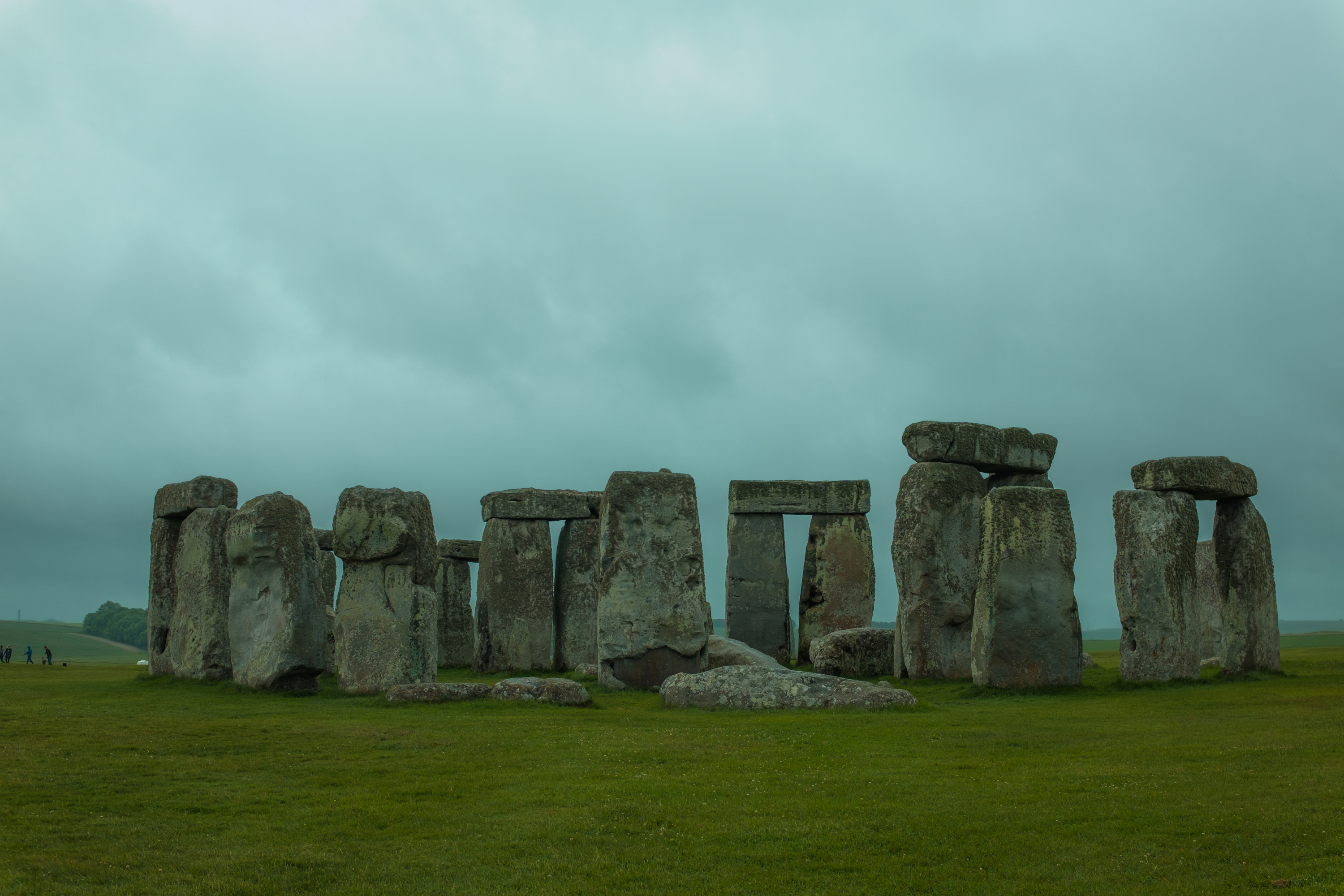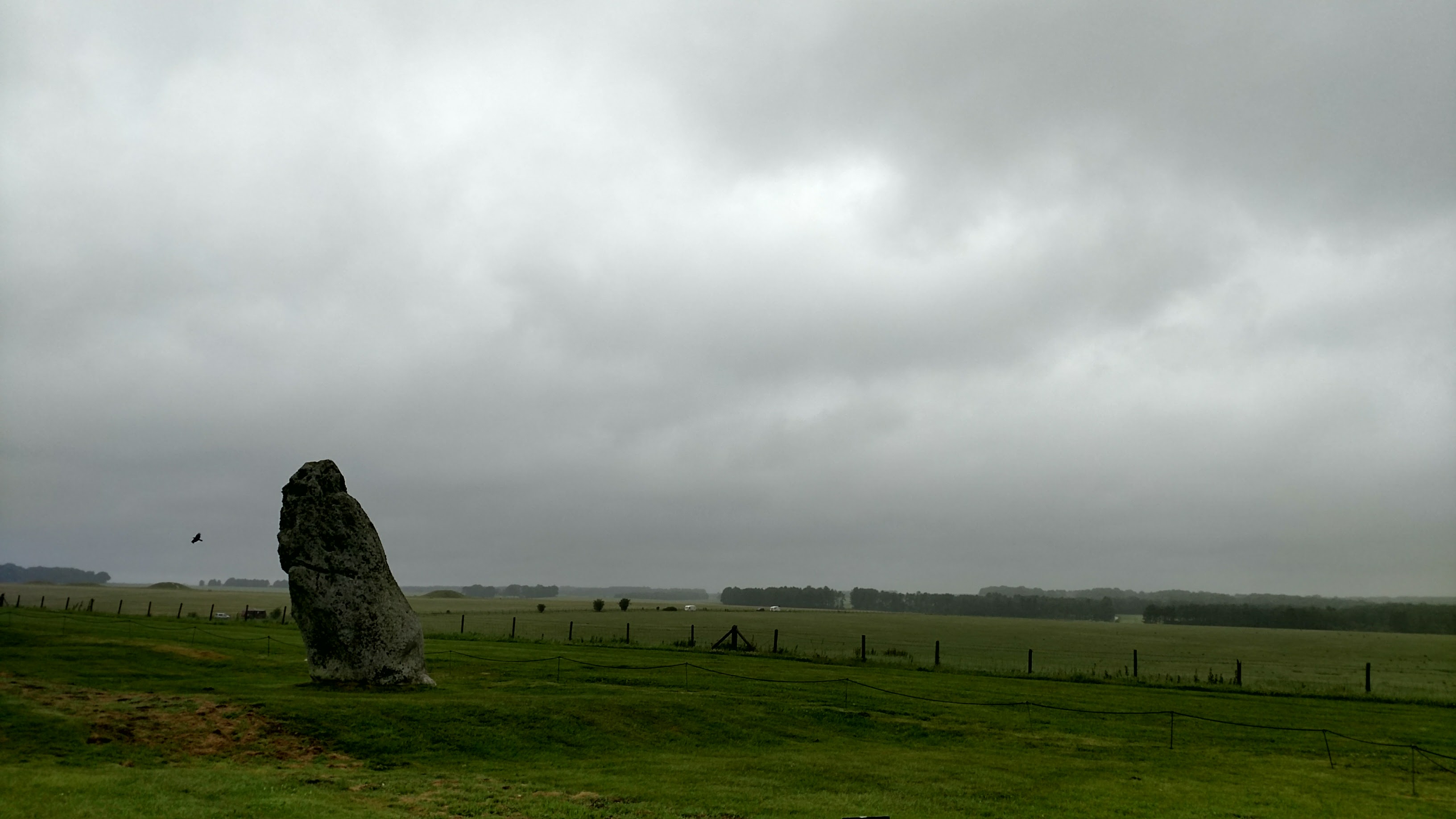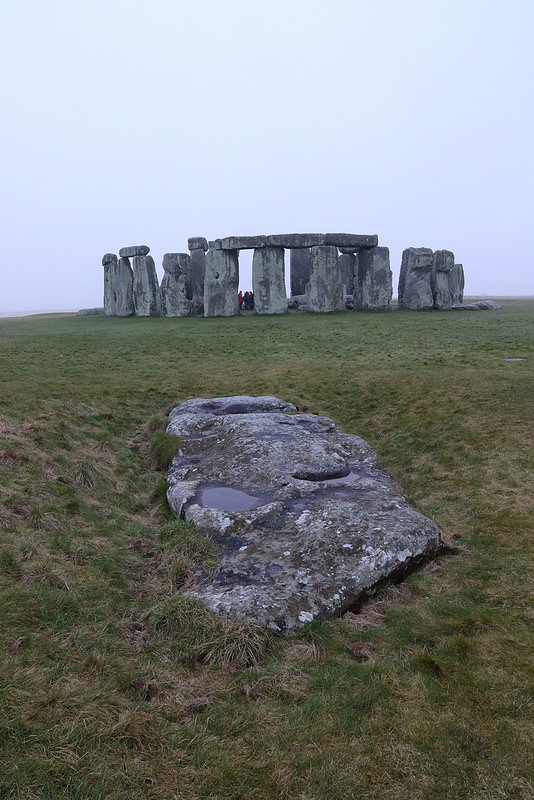Difference between revisions of "Stonehenge"
From Londonhua WIKI
(→Stonehenge Reconstruction) |
|||
| Line 26: | Line 26: | ||
== Summer Solstice == | == Summer Solstice == | ||
<br> | <br> | ||
| − | + | Stonehenge was built in three phases starting in 3000 B.C. and was finished in approximately 1,600 B.C. Its purpose is yet to be discovered, it has a unique feature. If a person stands in the right place he or she will be able to see the sun rise right above the Heel Stone through the arch. A similar story can be said about the winter solstice, where people can watch the sun set between the three vertical stones or the Trilithon. It was clear that the builders of Stonehenge watched the sun quite closely. The Stonehenge now attract thousands of people each year come to watch the summer solstice sunrise from the Heel Stone. <ref>http://earthsky.org/earth/gallery-the-summer-solstice-as-seen-from-stonehenge </ref> <ref> http://www.english-heritage.org.uk/visit/places/stonehenge/plan-your-visit/summer-solstice/# </ref> | |
<br> <br> | <br> <br> | ||
Revision as of 11:14, 13 June 2017
 Image by Jacob Dupuis | |
| Stonehenge | |
|---|---|
| Year | 3000BC or Older |
Overview
Stonehenge is a prehistoric monument that is located in Wiltshire, England. It is a ring of standing stones that was probably used for ceremonial burials, and keeping the time of the seasons. It was also used as a burial ground. Archaeologists believe the site was constructed from around 3000 BC to 2000 BC. It is on the UNESCO's list of World Heritage Sites. Stonehenge is owned by the nation and managed by the English Heritage. The surrounding land is owned by the National Trust.
Contents
Background
Stonehenge is a World Heritage Site because it is the most architecturally sophisticated prehistoric stone circle is in the world. The monument itself is the only surviving intellectual stone circle in the world. The stones were brought from various locations including the Preseli Hills which are over 150 miles away and possibly Marlborough Downs which is 19 miles away. They have very precise interlocking joints which you do not see at any other prehistoric monuments. [1] They are the only stones in the world to have a horizontal stone laying on top of vertical ones. These top stones are called little stones. And within a five mile radius around the Stonehenge there are 300+ burial grounds which appear as the little bumps/hills of grass.
History
The Stonehenge's age was discovered by the bones found around the site. The bones were carbon dated which gave us an estimate of how old the site is. The animal bones found around the site also gave us a clue for the purpose of this site. The meat was eaten, but the bone marrow was not indicating that this was a ritual or festival sight were humans gathered for enjoyment, eating carelessly.
Around 2500 BC the initial stones arrived at Stonehenge. These stones were sarsens and bluestones. The sarsens made up the inner horseshoe and an outer circle, while the bluestones were set up in a double arc between them. 200 to 300 years later the bluestones were rearranged to form a circle and inner oval.
Summer Solstice
Stonehenge was built in three phases starting in 3000 B.C. and was finished in approximately 1,600 B.C. Its purpose is yet to be discovered, it has a unique feature. If a person stands in the right place he or she will be able to see the sun rise right above the Heel Stone through the arch. A similar story can be said about the winter solstice, where people can watch the sun set between the three vertical stones or the Trilithon. It was clear that the builders of Stonehenge watched the sun quite closely. The Stonehenge now attract thousands of people each year come to watch the summer solstice sunrise from the Heel Stone. [2] [3]
Stones
Heel Stone
 Image by Benjamin Secino | |
| Heel Stone |
|---|
The Heel stone is a large, upright, stone standing at the intersection between the Avene and the earthwork enclosure. The Heel stone is differentiated from all the other sarsen stones at Stonehenge by its natural, unworked exterior. The Heel stone may have been raised upright during the Neolithic period, and marks the place of the rising sun on the summer solstice. It is not known whether the Heel stone has always stood alone, or if it was originally part of a pair[4].
Slaughter Stone
 | |
| Slaughter Stone |
|---|
Despite the grim title as Stonehenge's Slaughter Stone, the name is actually a misnomer. Located between the aforementioned Heel Stone and Stonehenge proper, the stone gets its foreboding name from the reddish color of the stone takes under rain or stormy conditions. A result of iron deposits within the stone, such an apparent feature distinguishes this horizontal slab of stone from its grass surrounding. The section of the stone visible above ground is estimated to weight around 4.2 tons. Majority of the stone lies underground as it has sunk into the earth beneath it over the millennia. [5].
Normanton Down Barrow
calimed
References
- ↑ English Heritage. (n.d.). Retrieved June 12, 2017, from http://www.english-heritage.org.uk/visit/places/stonehenge/history/significance/#
- ↑ http://earthsky.org/earth/gallery-the-summer-solstice-as-seen-from-stonehenge
- ↑ http://www.english-heritage.org.uk/visit/places/stonehenge/plan-your-visit/summer-solstice/#
- ↑ Stonehenge Glossary. (n.d.). Retrieved June 10, 2017, from http://www.english-heritage.org.uk/visit/places/stonehenge/things-to-see-and-do/glossary-text-version/
- ↑ The Stones of Stonehenge. (n.d.). Retrieved June 10, 2017, from http://www.stonesofstonehenge.org.uk/2015/02/slaughter-stone-stone-95.html
External Links
Image Gallery
If appropriate, add an image gallery